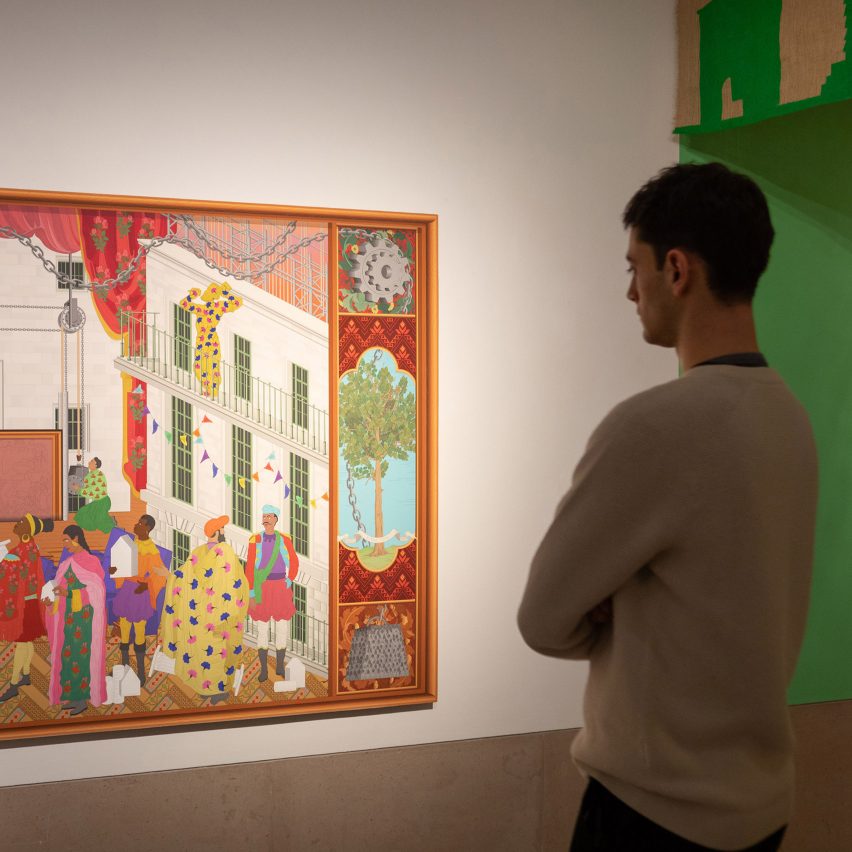
A graphite mural and pine sculptures are among the artworks in an exhibition examining the colonial history embedded in the Royal British Institute of Architects‘ London headquarters.
The exhibition, named Raise the Roof: Building for Change, grapples specifically with the colonial symbolism in two of the building’s most divisive interior features.
These are the Jarvis Mural and the Florence Hall Dominion screen, which formed part of the original decorative scheme when the Royal British Institute of Architects (RIBA) headquarters opened in 1934.
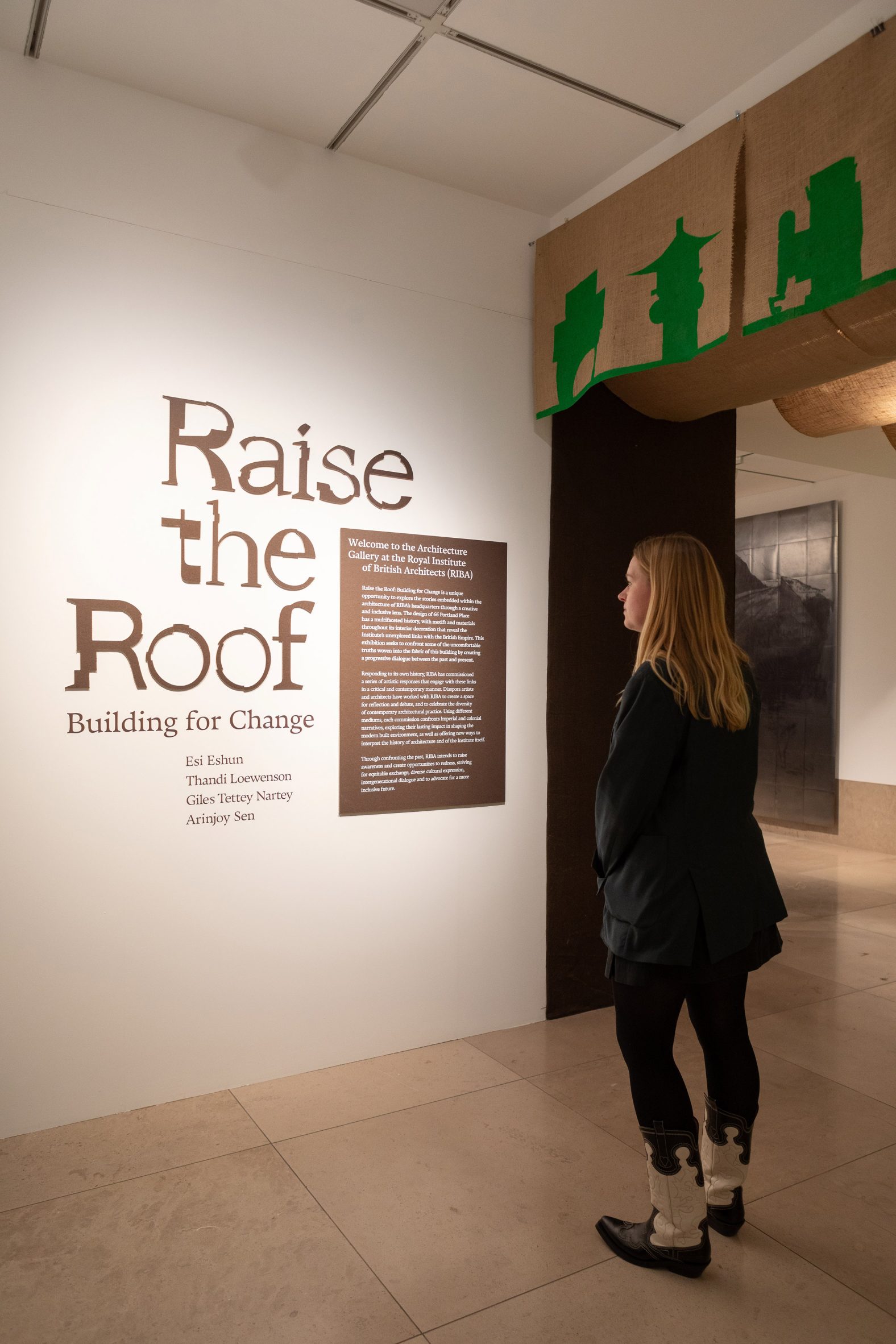
The Grade II-listed building at 66 Portland Place remains a key destination for RIBA’s members, as well as the wider profession and the public.
Raise the Roof: Building for Change has been produced by RIBA’s in-house curator Margaret Cubbage to encourage reflection on the building’s imperial past and look ahead to “decolonising” it.
“This show is the first step in decolonising this building,” said RIBA’s exhibition curator Cubbage.
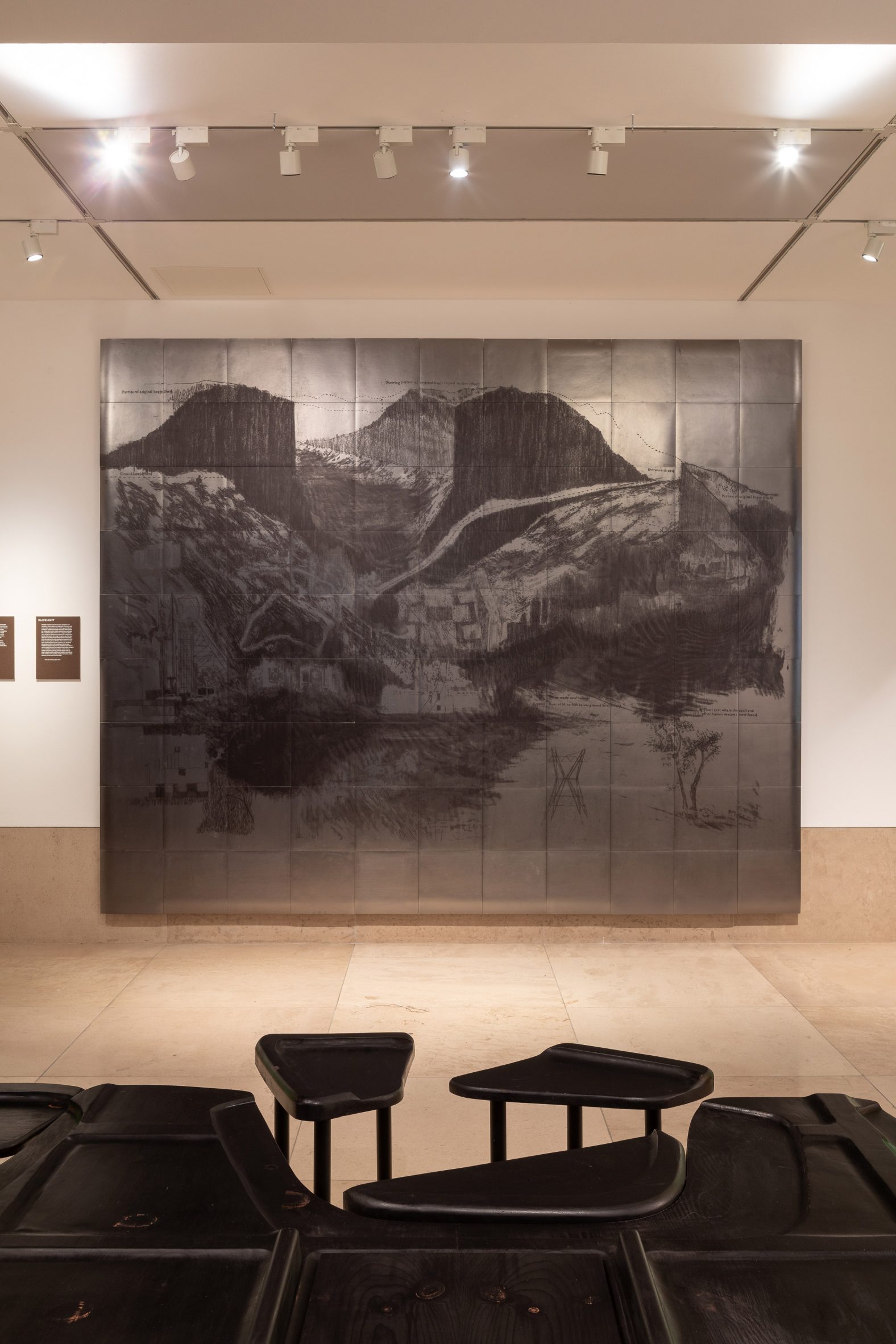
“Ahead of the building’s closure in spring 2025 and the simultaneous celebration of its 90th year since opening, there was a push to deliver the exhibition,” Cubbage told Dezeen during a tour.
The carved timber Dominion Screen in the Henry Florence Memorial Hall by sculptor Denis Dunlop depicts the animals and flora found within the British Empire and the people who were subjected to its colonialism.
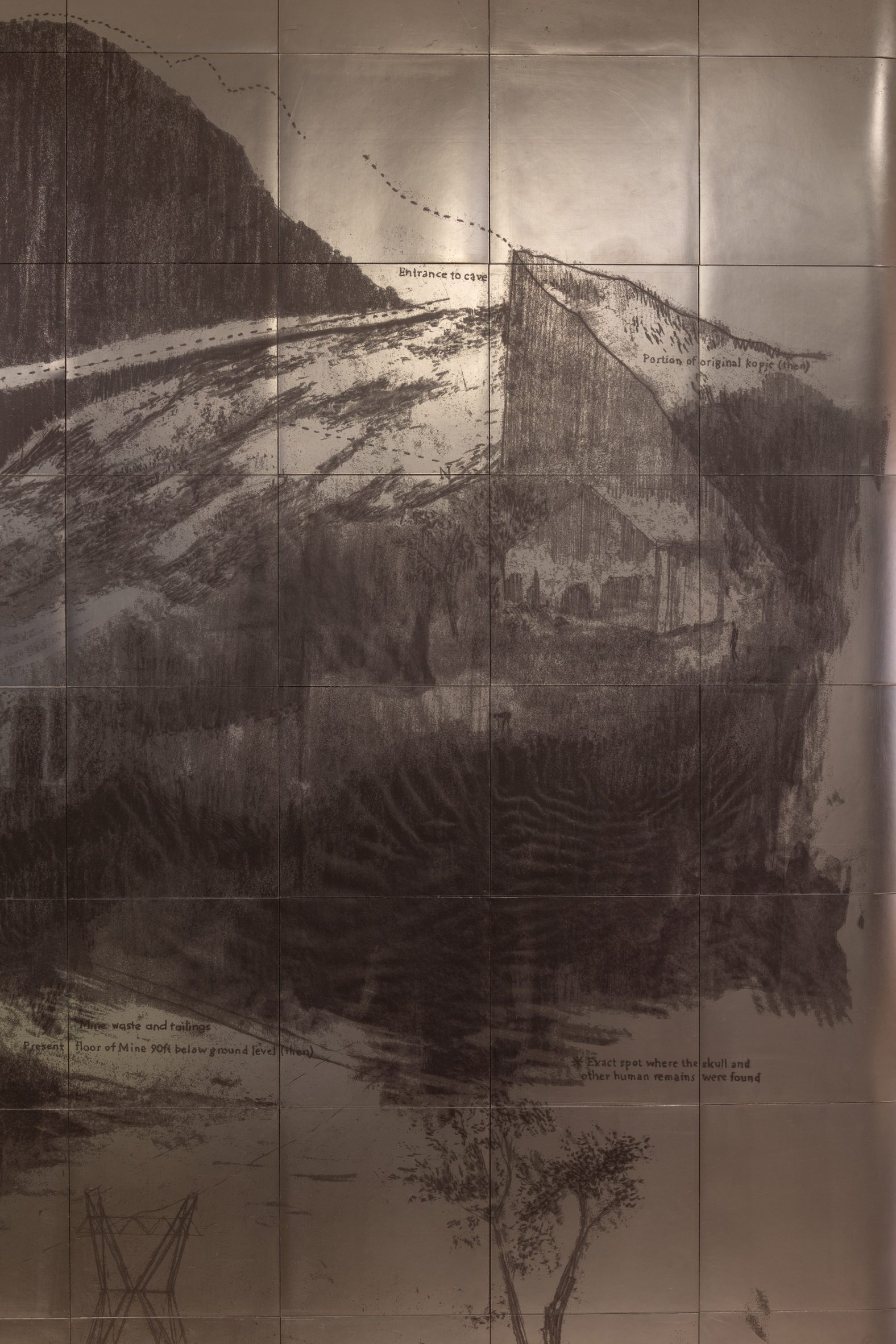
Meanwhile, the Jarvis Mural, painted by artist Edward Bainbridge Copnall, portrays the RIBA council presiding over groups of Indigenous people of South Africa, India, Canada and Australia, who are portrayed as primitive savages.
Responding to these two features, creatives Esi Eshun, Giles Tettey Nartey, Thandi Loewenson and Arinjoy Sen produced works that explore themes of gender, ethnicity, race and imperialism.
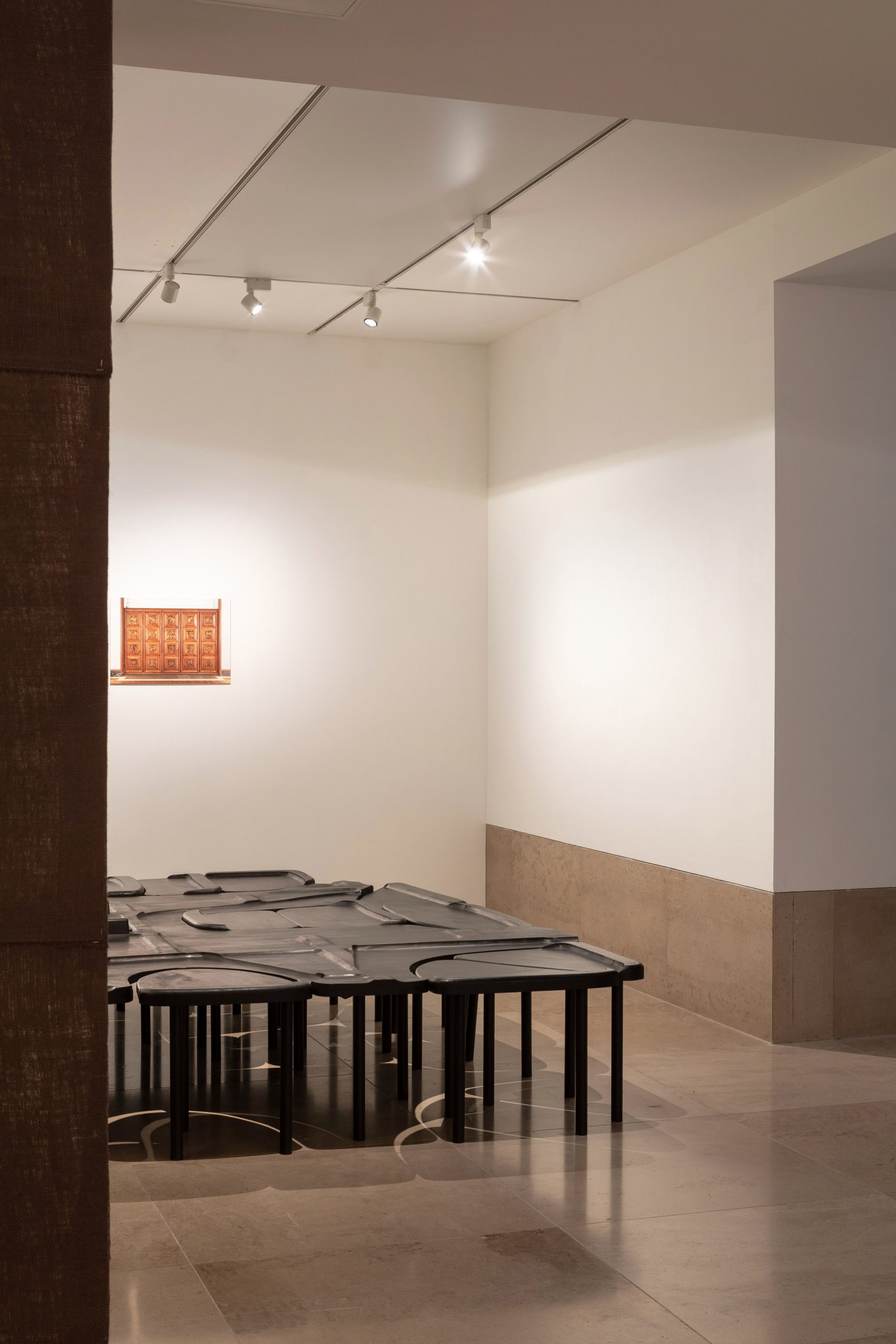
Nartey’s contribution, named Assembly, is a collection of sculptures crafted from the same Quebec pine as the Dominion Screen, but stained midnight black.
The 17 pieces include organic-shaped stools and a large carved table, designed for visitors to engage with as part of the exhibition and respond to the imperialist screen.
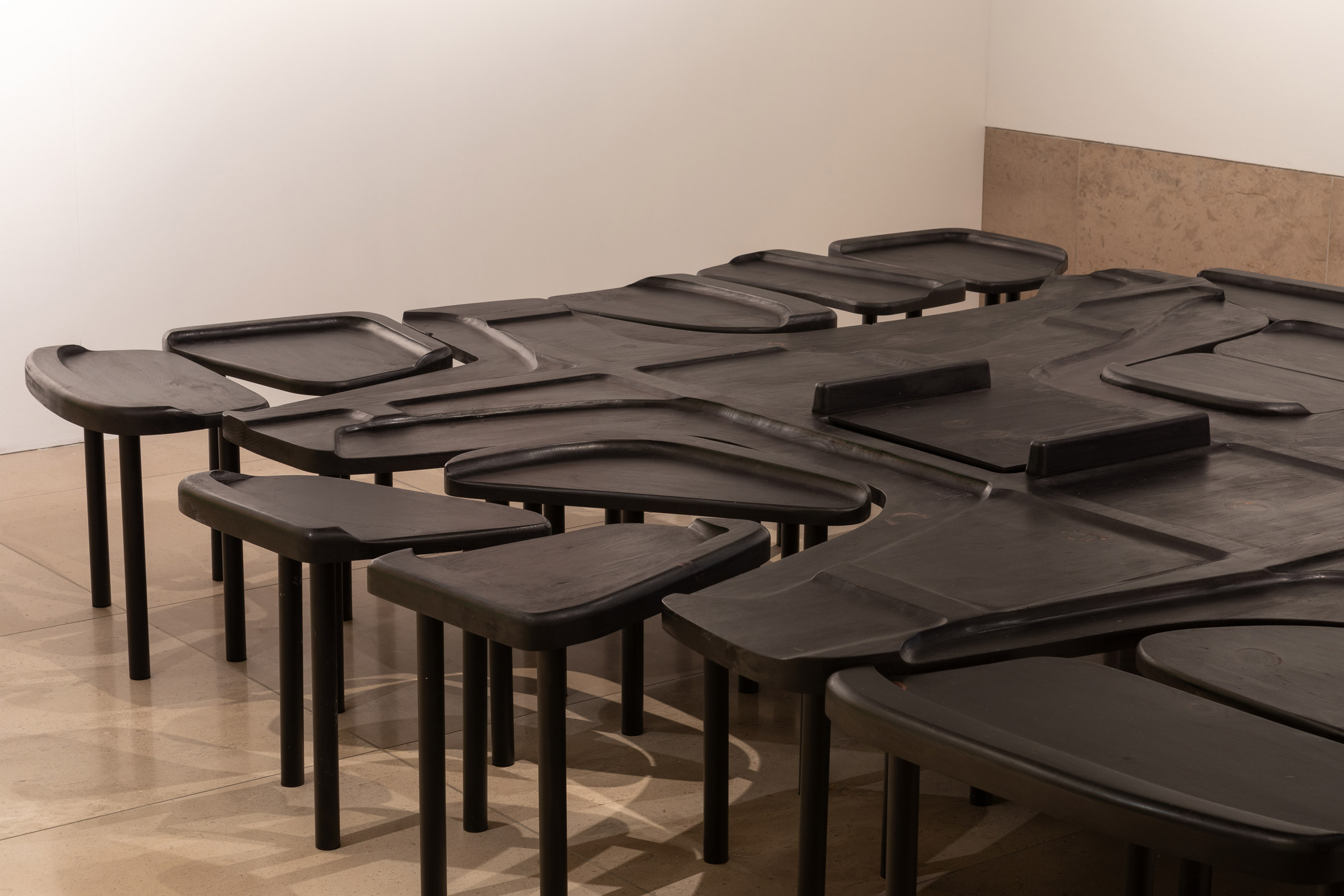
Meanwhile, architectural researcher Loewenson is exhibiting a heavily textured graphite mural called Blacklight, which is intended as an additional layer for the Jarvis mural.
It depicts the Broken Hill lead and zinc mine in Kabwe, Zambia – one of the first British colonial mineral extraction sites – which is now one of the world’s most contaminated landscapes. It is accompanied by an essay working to “unearth stories of extract, exploitation and racialisation”, Cubbage said.
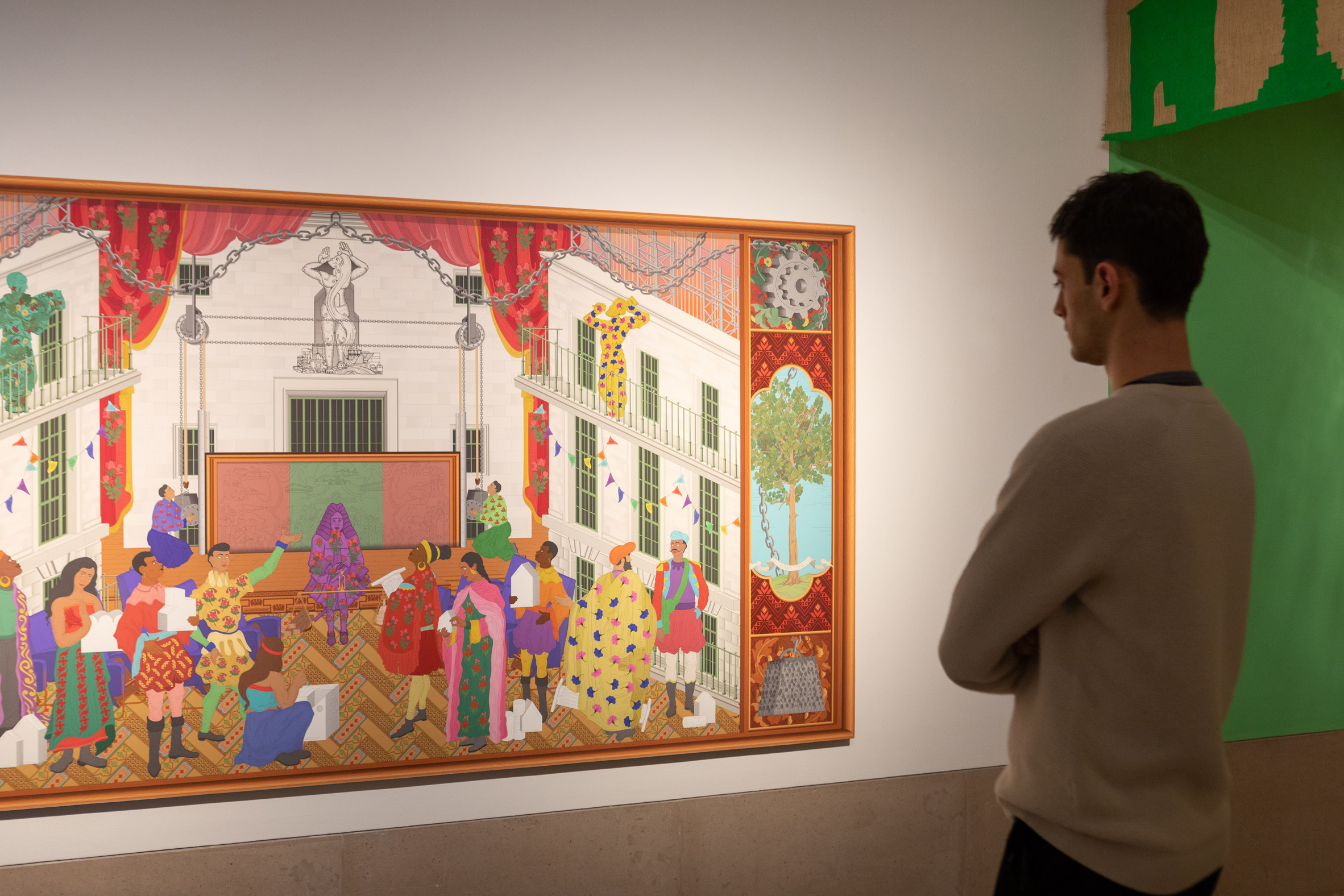
Adjacent is The Carnival of Portland Place, an intricately detailed illustration by architectural designer Sen that also addresses the Jarvis Mural.
It reimagines RIBA through joyous, psychedelic scenes, within which the Indigenous subjects originally depicted in the mural are placed at centre stage. The aim is to challenge the imperialist narratives presented by the original mural.
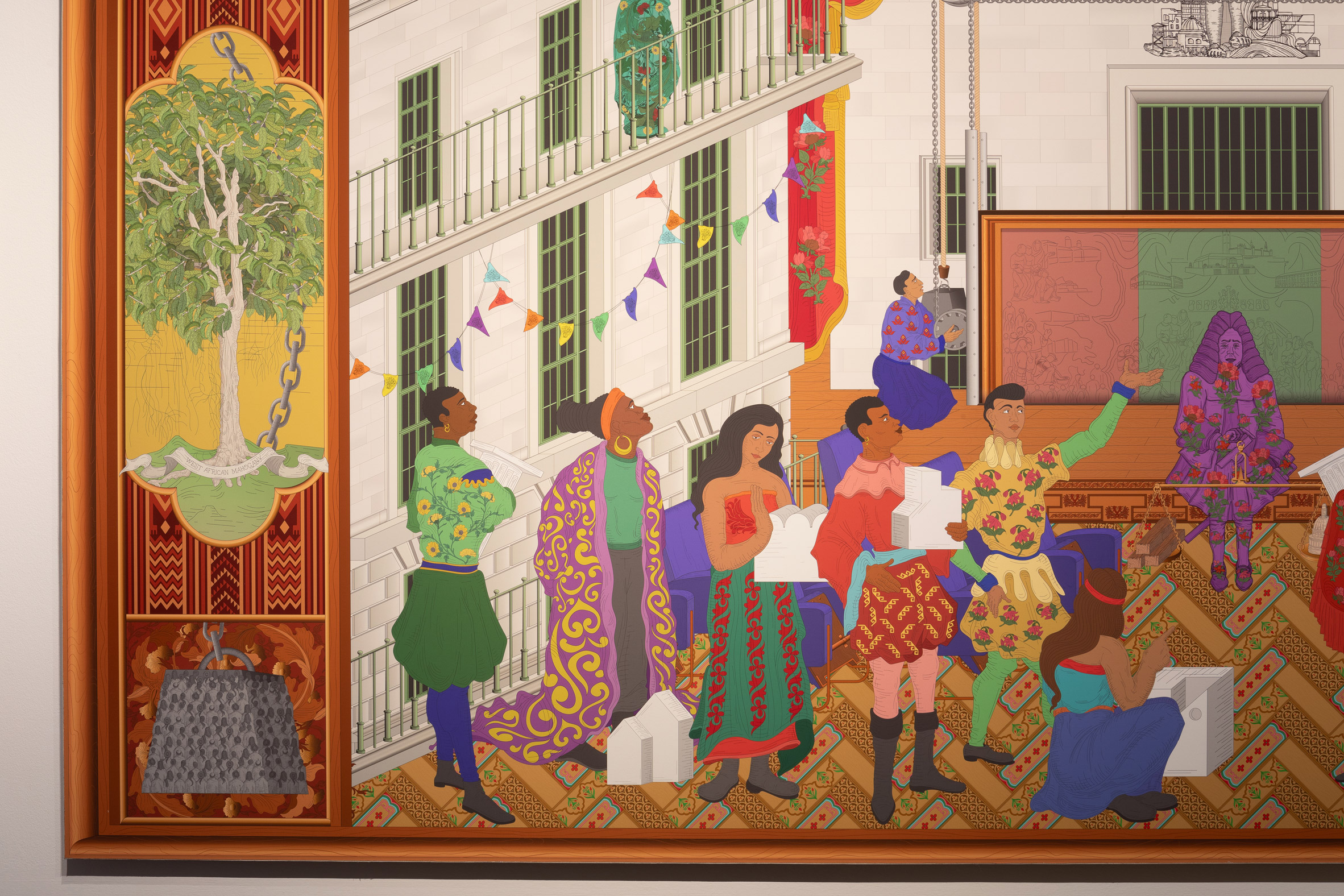
The show concludes with a short film by artist Eshun called The Vanishment, which weaves archival imagery and new footage she has taken in the building to interrogate the stories behind the Jarvis Mural.
The only artist without a background in architecture commissioned in the show, Eshun offers a “response from outside of the profession”, Cubbage explained.
“The intention with these exhibitions is that they’re accessible to broader audiences,” she continued.
“I wanted to open it up, even around the themes of colonialism,” added Cubbage. “To talk about architecture doesn’t mean it has to be a model or a drawing; this show is also about opening up the conversation and the canon by bringing in new voices.”
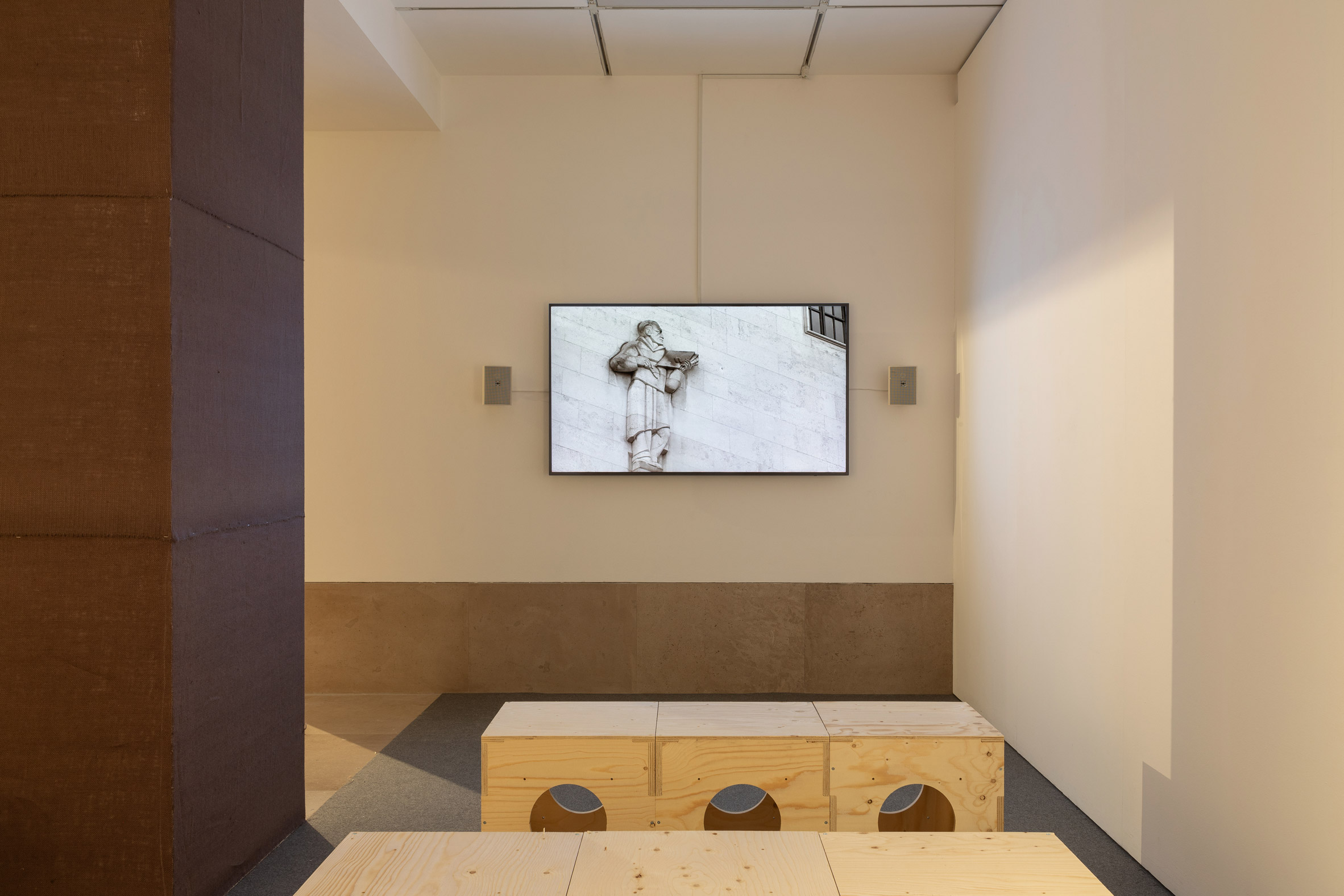
With exhibition design by architecture studio Msoma Architecture and visual identity by Creative Studio Plan B, the artworks are divided across smaller gathering spaces, designed to be conducive for intimate conversations and debates about the work between visitors.
Accompanying workshops to the exhibition will use the Assembly sculptures as an engagement tool to host discussions, but the lifespan of the works will extend beyond the show.
“This exhibition is the first step in the process,” said Cubbage. “But the desire is that there will be a legacy with all these pieces.”
Raise the Roof: Building for Change is a free exhibition that will remain on show at the RIBA’s headquarters until 21 September 2024.
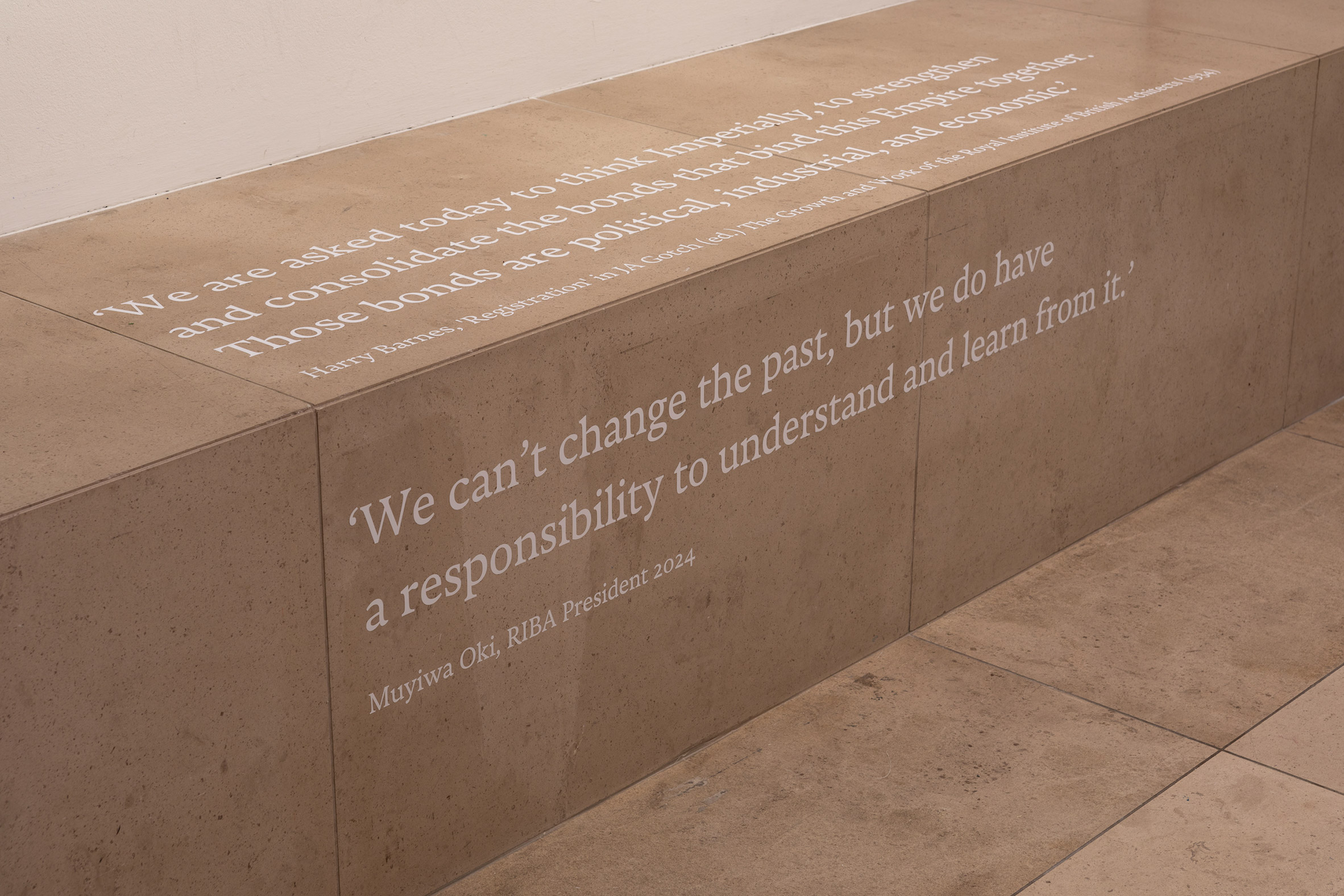
Its opening coincided with this year’s RIBA Gold Medal ceremony, which saw Ghanaian-Scottish architect Lesley Lokko become the first African woman to be awarded the prestigious prize.
“With the announcement of Lesley Lokko receiving a RIBA Gold Medal, it felt critical to hold space and celebrate,” concluded Cubbage.
The building is set to close early in 2025 for its refurbishment, which Benedetti Architects is carrying out to modernise the building.
The photography is by Agnese Sanvito.
Raise the Roof: Building for Change takes place from 27 April to 21 September at 66 Portland Place. See Dezeen Events Guide for an up-to-date list of architecture and design events taking place around the world.
The post RIBA confronts colonial history of London HQ in Raise the Roof: Building for Change exhibition appeared first on Dezeen.
